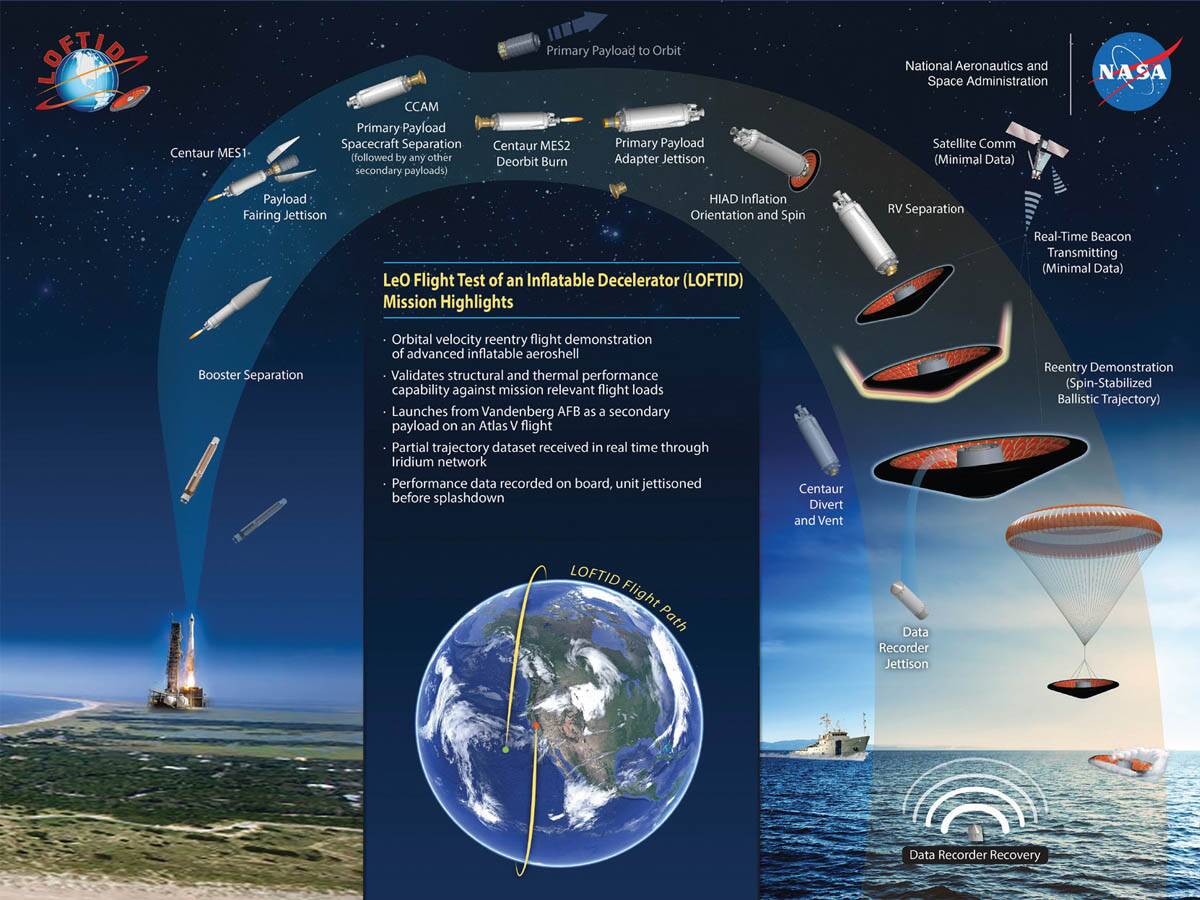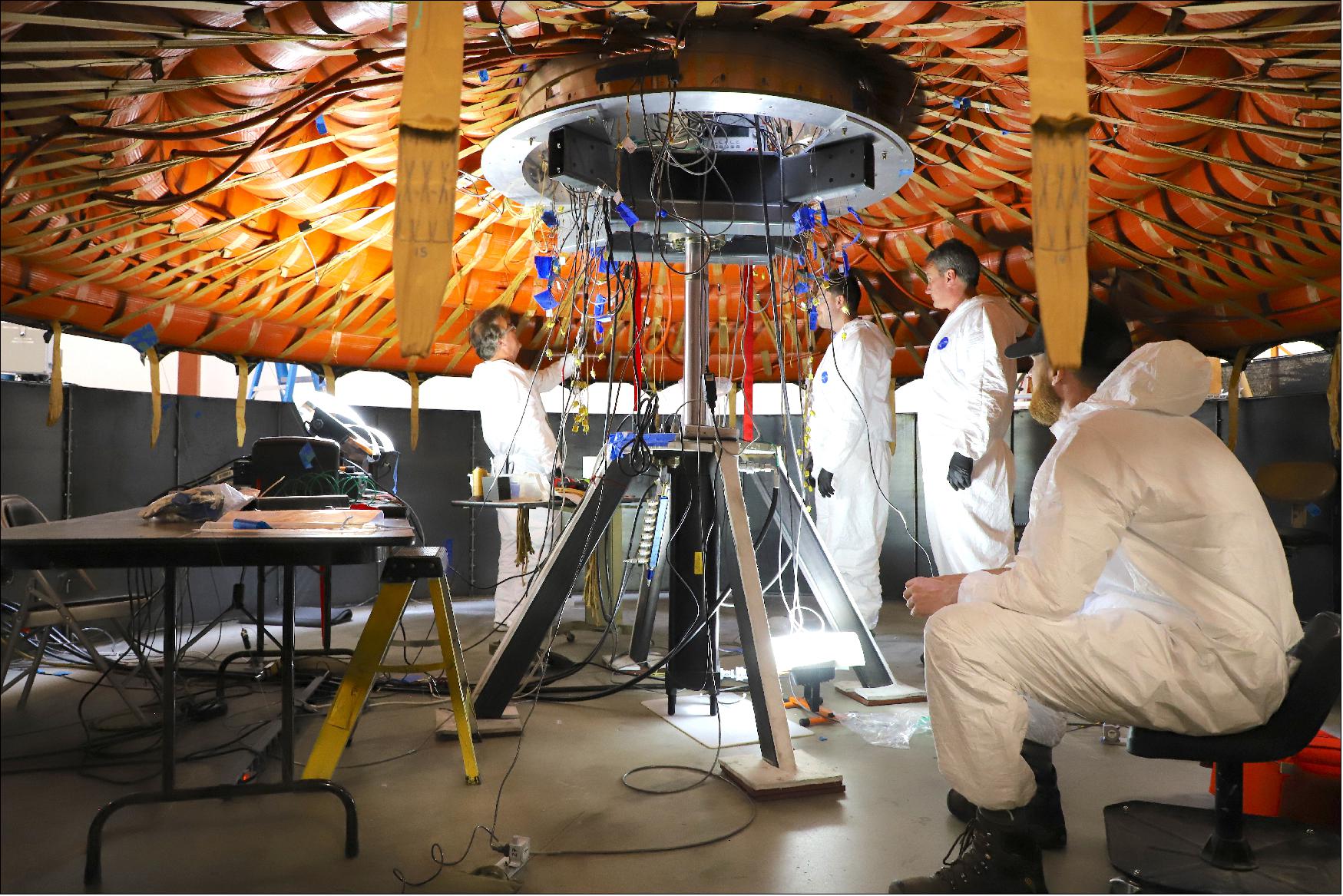NASA has made another successful step that brought the agency closer to the cherished dream of sending a man to Mars. On November 10, a successful test of the inflatable heat shield technology called LOFTID took place. This braking screen, similar to a flying saucer, made a flawless journey into space and back to Earth, being driven 800 km off the coast of Hawaii.
After deployment in space, NASA visually confirmed with live video the full deployment of LOFTID at an altitude of approximately 125 km. Telemetry was briefly lost during the test, but everything went well. The screen fell just 8 km from the evacuation vessel Kahana II, which made it easy to get it. Also, according to the plan, LOFTID threw out the flight recorder for data collection.
“This is a great, great opportunity to get flight data and see how it actually performed,” Greg Swanson, head of LOFTID at NASA’s Ames Research Center, said during the same live broadcast.
Complex braking
The USD 93 million LOFTID is an inflatable airship designed to slow down a spacecraft’s entry into the Martian sky and reduce the amount of heat generated by atmospheric friction. This technology is one of the solutions for landing in the ultra-thin Martian atmosphere. Martian landings are particularly difficult because spacecraft experience very little drag to decelerate compared to Earth’s atmosphere.

Sometimes there are not even enough launching parachutes to lower light payloads to Mars. For example, the Spirit and Opportunity rovers descended to the surface with the help of airbags that softened the fall. The big Curiosity and Perseverance rovers already needed a rocket-powered sky crane to gently lower the SUV-sized rovers to the surface.
When will the landing on Mars take place?
LOFTID’s flying saucer shape is designed to squeeze into a conventional rocket at launch, but expand and inflate when it reaches Mars and its atmosphere. This brake screen will be the first stage on the way to the surface. Parachutes will continue to help, as well as sky cranes.

The dates of man’s landing on Mars remain vague. First, NASA should focus on its Artemis program, which aims to return people to the Moon and create a permanent base on it for astronauts to live in 2025-2026. If everything goes according to plan and there are no more delays, the SLS rocket will send the Orion spacecraft on a trip around the Moon without a crew on November 16, which will mark the beginning of the lunar program.
Earlier we reported how comfortable caves for the first astronauts were found on Mars.
According to Space
Follow us on Twitter to get the most interesting space news in time
https://twitter.com/ust_magazine

